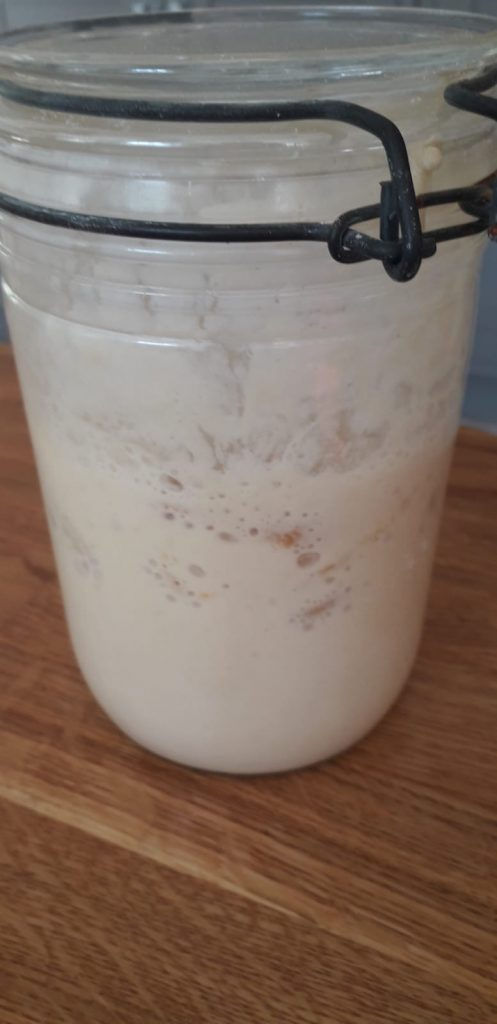Sourdough Starter Recipe
- Jacqueline Derbyshire
- Apr 16, 2020
- 2 min read
I am a complete novice at making sourdough! I have had one previous attempt at making a sourdough starter a couple of years ago, but with no success at all.
My latest attempt was far more successful, forced on me by this current lockdown and a lack of yeast. I took inspiration from a Daily Mail article on how to make your own yeast starter and it worked!
So here goes on how to make your starter and the recipe/method for the actual bread will follow…It’s a two stage process and requires patience!
The preparation of sourdough begins with a pre-ferment (the “starter” or “leaven”), a fermented mixture of flour and water, containing a colony of microorganisms, including wild yeast and lactobacilli. The purpose of the starter is to make a leaven / levain and develop the flavour of the bread.
Sourdough starter is essentially fermented flour and water mix. That’s literally it. Once you have got the hang of the starter mix, the rest is easy. Sourdough is also widely thought to be both easy to make and easy to digest, being a favourite of people with IBS who can’t digest regular commercial bread… It’s definitely worth a try.


Put a small handful of dried fruit (dried apricots, raisins or sultanas etc) into a large jar (a Mason jar is ideal) and pour 50ml of water over them.
Put the lid on and give the mix a good shake. The water will go slightly cloudy. This cloudiness apparently is the natural yeast on the fruit (I didn’t believe it either !).
Next, add 50g of flour and mix thoroughly so there are no dry bits of flour left.
Pop the lid back on and leave in a warm place for about 12 hours for the yeast to start working.
After the 12 hours, you should start to see a few bubbles formed on the surface.
Add a further 50ml water and 50g of flour, give it a good mix and pop the lid back on.
Repeat this process over the next 2-3 days and the mix will get more lively as the days go on.
By the 4th day the mix should appear very lively and increased in size. It will smell sour, like a strong natural yogurt. You have now made a sourdough starter !
To check that the starter is ready to use, take a teaspoon of the mix and put in a cup of cold water…the mix should float. If it doesn’t, then it’s not ready to use, so leave it for another day.
To make a sourdough bread, we will use some of the starter mix to make a “levain”.
As it is a living thing, the starter will need feeding. Most people keep their starter mix “dormant” in the fridge and take it out at least 24 hours before using. They re-activate the starter with most recipes suggesting discarding half the mix (or starting a second jar off for a friend) and then adding 100g flour and 100ml water.
The starter needs to get to the bubbly stage again, so this may need to be repeated over a couple of days.
I’ll be back shortly with instructions for the next step!






Comments